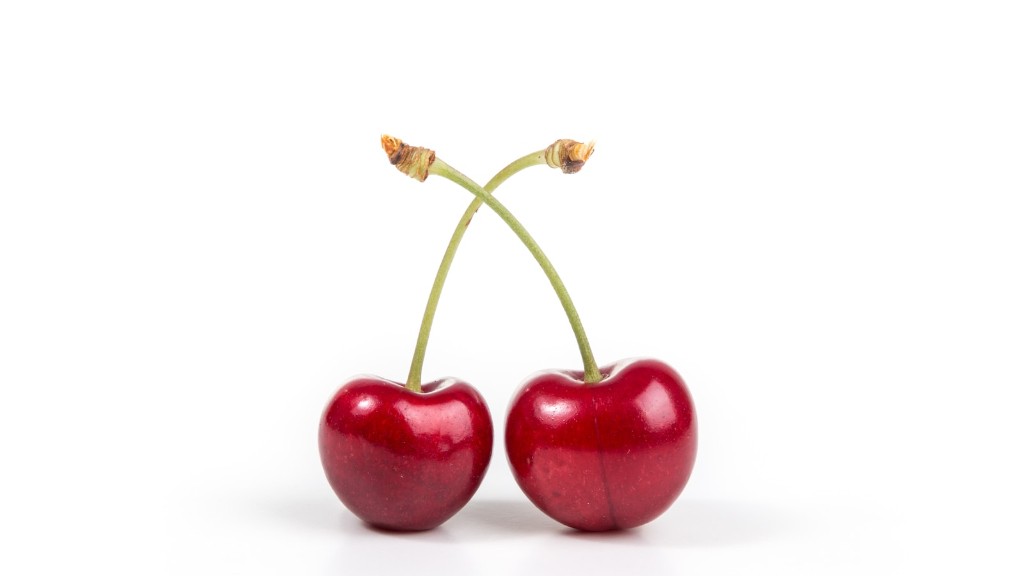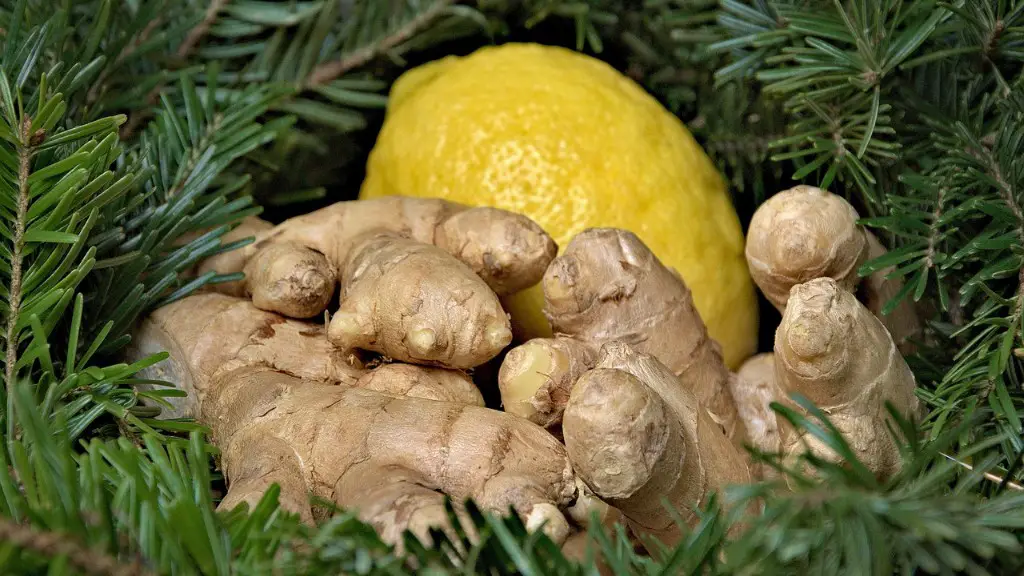Caring for a lemon tree in a potted container is both convenient and enjoyable. It’s essential for the health of your citrus tree to provide the proper nutrients, environment, and maintenance. Here are some tips on how to take care of a potted lemon tree.
You need to give your tree the right soil. A good potting mix should be well draining and slightly acidic. A soil that’s too heavy or dense could cause the tree’s roots to become waterlogged, and ultimately this could lead to root rot. Adding compost, peat moss, or vermiculite to enhance your soil is also helpful.
Ensuring your tree gets the right amount of light is also critical. Place your tree in a sunny spot that gets a few hours of direct sun each day. If your tree isn’t getting enough direct sun, it won’t thrive. You might need to move the tree indoors or near a window to make sure it gets enough light.
It’s important to provide ample water to your tree. underwatering or overwatering can both be damaging to a lemon tree. You should allow the top inch of soil to dry out before you water it again. Be mindful of your tree’s watering needs during hot and cold weather, as it may require more or less water at different times.
Temperature also plays an important role in the health of your tree. during winter, keep your tree between 45 and 55°F, while it should remain slightly warmer during the summer, between 55 and 65°F. Make sure not to let the temperature drop much lower in the winter, as this can cause frost damage.
Fertilizer is also a must when taking care of potted lemon trees. citrus trees need food to help them stay healthy, so feed your tree with a balanced fertilizer several times a year. Avoid overfertilizing, as this can lead to an accumulation of salts in the soil, which can reduce the tree’s ability to absorb nutrients.
Lastly, make sure to prune your tree periodically. Regular pruning will help the tree maintain its structure and shape, as well as promote healthy growth. When pruning, take care to avoid cutting too close to the trunk or removing too much of the foliage. Trim off weak or dead branches, or branches that are crossing over each other.
Containers and Location
Choosing the right type of container is also important when growing a lemon tree in a pot. A terracotta container is an ideal option, as terracotta is porous so it will help with moisture control and prevent root rot. Make sure the container is large enough to allow the tree to grow and develop its full potential.
Once you have the right container, you need to decide where to place your tree. The ideal spot would be somewhere warm and sunny, like a patio or balcony. Make sure the location is sheltered from strong winds, as this could cause the soil to dry out or blow away.
If you live in a colder climate, you may need to keep your lemon tree indoors for some of the year. If that’s the case, make sure to place it near a window where it can get some natural light. You may also need to consider buying a supplemental lighting system to ensure your tree gets enough light.
You might also find it helpful to place your tree in a south- or west-facing window, as this will provide the tree with plenty of light. You may also need to rotate the tree periodically to maintain an even distribution of light and ensure that all parts of the tree are getting enough sun.
Finally, make sure to choose a location that’s easy to access so you can get to the tree’s soil and branches easily. This will make it much easier to water and prune your tree.
Fertilizers
When you’re ready to start fertilizing your lemon tree, look for a fertilizer specifically designed for citrus trees. This will ensure that your tree is getting the right nutrients at the right times. A good fertilizer should be high in nitrogen, phosphorus, and potassium with a ratio of about 8-4-5.
The best time to fertilize your lemon tree is in the spring and fall, as this will help encourage vigorous growth and healthy blooms. Be sure to read the instructions on your fertilizer before applying, as the amount of fertilizer used can vary depending on the size of your tree or the type of soil you have.
You can also supplement your regular fertilizer with a slow-release fertilizer or compost. This will help ensure that your tree gets the nutrients it needs throughout the entire growing season. Make sure you’re not overfertilizing, however, as too much fertilizer can be damaging to a lemon tree.
If you’re having trouble finding a suitable fertilizing product, check with your local garden center or home store. Most stores will carry an extensive selection of fertilizers specifically formulated for citrus trees.
If you want to give your tree an extra boost of nutrition, you can top-dress the soil with a few inches of compost. This can be added around the base of the tree once a year and will help increase the nutrients and improve the drainage of your soil.
Pests and Diseases
When taking care of a potted lemon tree, it’s important to keep an eye out for pests and diseases. If you spot any pests, such as aphids, scales, or mealybugs, treat the problem right away. You can use a natural insecticidal soap or neem oil to get rid of pests.
Be sure to monitor the tree for disease, too. Common diseases in lemon trees include root rot, twig dieback, and citrus scab. If you notice any of these problems, you should treat the tree with a fungicide immediately. Be sure to read the instructions and follow the directions carefully, as excessive use of fungicides can be damaging to plants.
It’s also important to inspect your tree for any signs of damage, as this can make it more susceptible to pests and diseases. Look for any broken or dead branches, discolored leaves, or spots on the fruit. If you notice any of these problems, remove the affected branches or areas immediately.
Finally, make sure the tree’s environment is well balanced. Make sure your tree is getting adequate light, water, and nutrients, as any of these factors can make it more vulnerable to pests and diseases.
Repotting
You’ll likely want to repot your lemon tree at some point. The best time to repot a tree is in the spring after the danger of frost has passed. When repotting, make sure to use a container that’s slightly larger than the one you’ve been using, as this will give the roots more room to spread out.
Add some fresh potting mix to the new container, then gently remove your lemon tree from the old container. Loosen any roots that are tightly packed, then place the tree in the new pot and fill in with more potting mix. Water the tree thoroughly, then place it in its new location.
When you repot your tree, you may also want to give it an optional dose of liquid fertilizer. This will help the tree adjust to its new environment and promote healthy root growth. Again, make sure to follow the instructions carefully and don’t overfertilize.
Lastly, take care not to shock the tree with a sudden change of environment. If you want to move the tree to a new spot, do it gradually by moving it a few feet each day until it reaches its final destination.
Pruning
Regular pruning is also a must when taking care of a lemon tree in a pot. Pruning can help maintain the tree’s structure, shape, and encourage healthy growth. When pruning, take care to remove only dead, diseased, or damage branches. Avoid removing too much foliage, as this can make the tree vulnerable to pests and diseases.
You should also avoid cutting too close to the trunk or trunk flares. Lastly, when pruning, try not to leave any large wounds on the tree, as this can impact the tree’s health. You can use pruning shears or loppers to make sure you’re leaving a clean, even cut on the tree.
Pruning your lemon tree every couple of months will help keep it in good shape and prevent it from becoming overgrown. Remember to take a few minutes to inspect the tree each time you prune in case there are any dead branches or areas of damage you need to remove.
Harvesting
Harvesting your lemon tree is a great way to enjoy the fruits of your labor. Depending on the variety of lemon tree you’re growing, you can start harvesting after the tree has been in the ground or container for at least a year. There’s no set harvesting time, as it can vary based on your location and climate.
When harvesting, make sure to grab the fruit that’s ripe and ready to be picked. Look for fruits with a yellow color, as these will be the ripest and ready for harvest. You should also make sure to pick fruits that are free of any blemishes or damage.
The best way to harvest lemons is with a pair of pruning shears or a knife. Cut the fruit from the tree, making sure to leave some of the stem attached. This will help protect the tree from infection and ensure it’s able to produce more fruits.
Finally, be sure to enjoy your lemons right away! Fresh lemons will last up to a week in the refrigerator, so make sure to use them up before they go bad.





